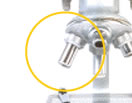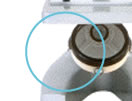|
An Integrated Approach to Cardiac Repair:
Predictive Computational Models, Engineered Biomaterials, and Stem Cells
Sarah Heilshorn (Materials Science & Engineering)
Ellen Kuhl (Mechanical Engineering)
Chris Zarins (Vascular Surgery)
More than 7 million Americans have suffered a heart attack or myocardial infarction (MI), with 1.6 million new or recurring cases each year. MI results in a large-scale loss of heart muscle, eventually leading to heart failure. Transplantation of stem cells into the heart muscle has shown great potential for repair of MI; however, this experimental therapy has produced highly variable outcomes and faces several substantial hurdles before it can be successfully applied in the clinic. We have assembled a multi-disciplinary research team to systematically evaluate several limitations of these procedures and determine creative new solutions to make this therapy safe, effective, and reliable. Our unique team is tackling this problem through three complementary strategies: first, we are developing a new gel material that can protect the transplanted cells during and after the injection procedure; second, we are developing a computer model of MI and cell transplantation to predict the optimal injection protocol; and third, we are using a non-invasive imaging technique to test our gel material and injection protocols in a rodent model of MI.
|










